In New Town on the Forth Berthold, ND reservation lies a small beading store down the main strip.
Thomasina Mandan owns the Mandan’s Bead Supply Storea modest size building that holds a rich and cultural practice of their Native traditions.
Mandan opened the bead store once she noticed the lack of accessibility to bead material within her community.
“There’s a lot of people here who do bead work. I figured if I can open a store sells bead and everything you need to do to do bead work then that will be like providing a service into the community,” Mandan said.
According to the non-profit organization Native Languages of the Americas there are vast amount of different designs and styles of bead work throughout North American tribes and nations. Each unique traditional design varies from tribes and was used for everyday trade during pre-colonial time.
In New Town, ND the tribes on the reservation are Manda, Hidatsa and Ariana as known as the Three Affiliated Tribes.
Cedar Henry, the Cultural Liaison at the Three Affiliated Tribes Museum expressed that many people are continuing to preserve their historical cultural and traditional indigenous practices including language.
“Our children learn the language, they can count and speak full sentences.” she said.
The store only sold bead material at first, but then expanded after the community wanted to sell their finished products on sell for confinement.
The bead store now sells material such as beads, needles, leather, buckles, fringe, fluff, horse-hair, blankets material to make earrings, necklaces and bracelets. As well as natural medicine such as sage, sweet grass and cedar sticks.
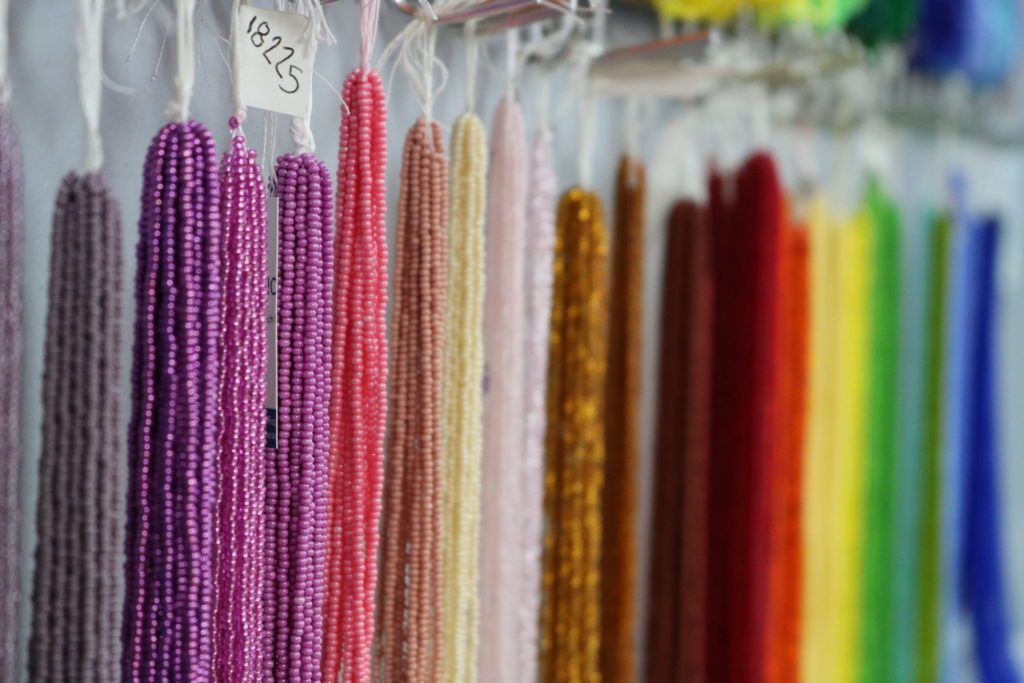
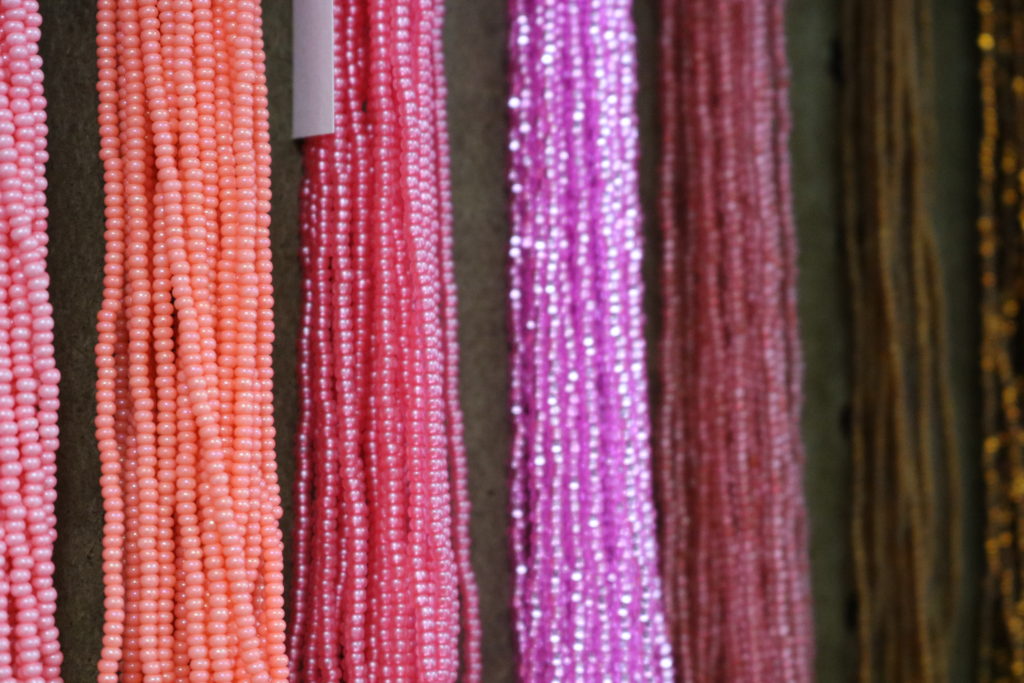
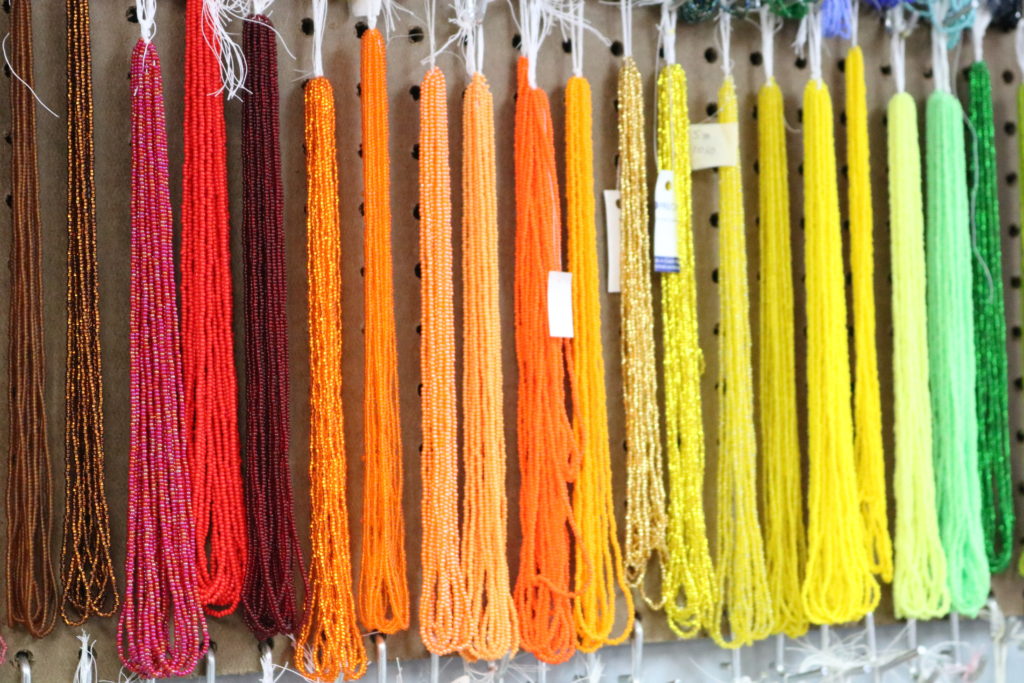

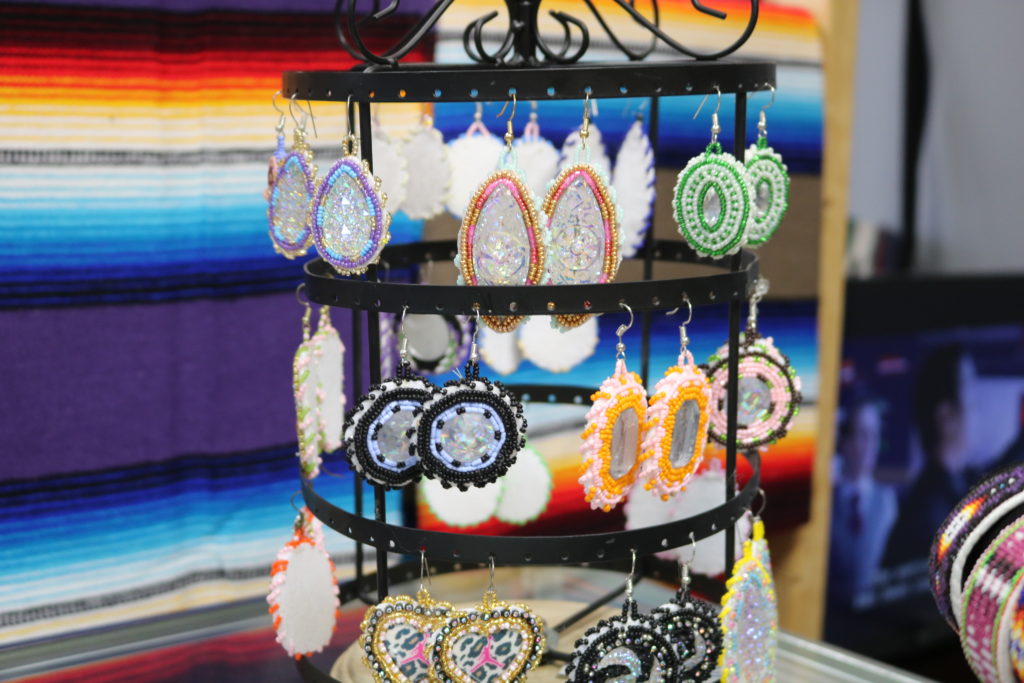
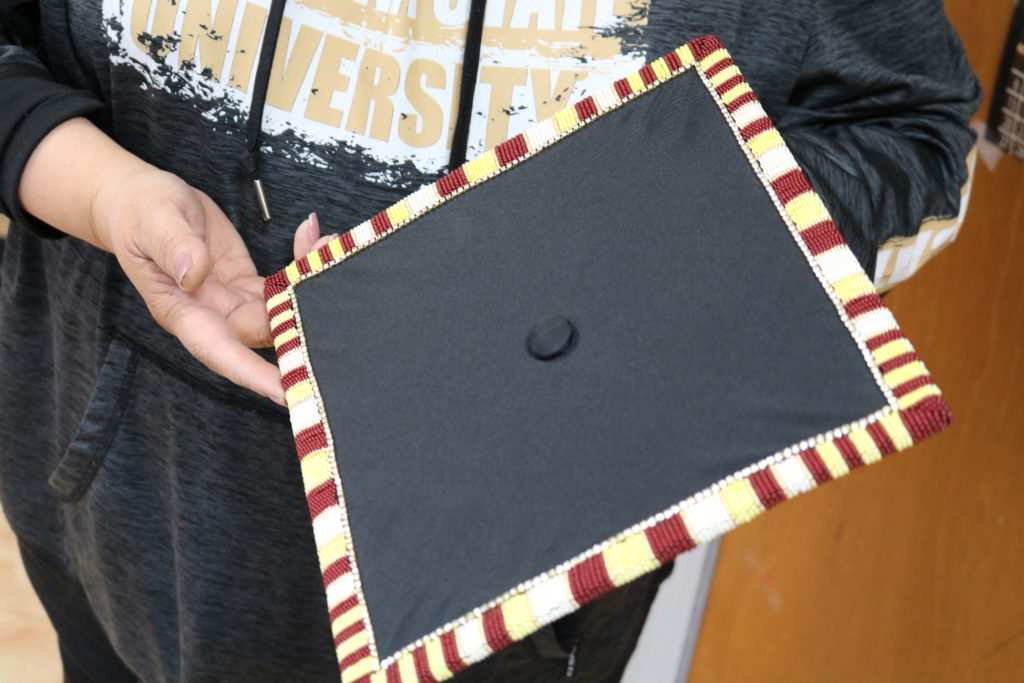
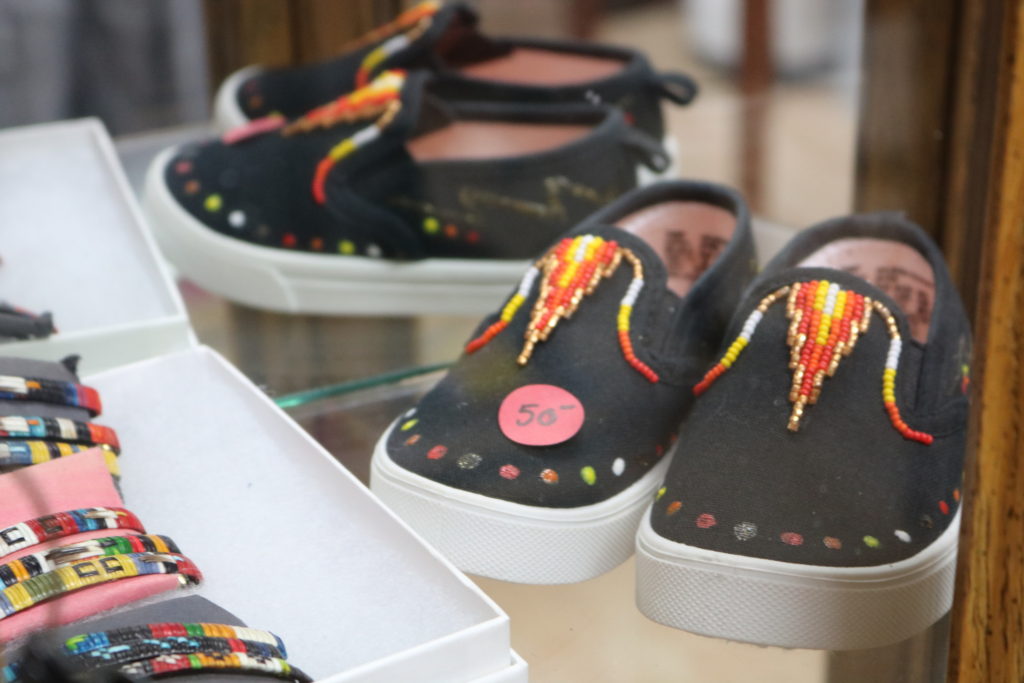
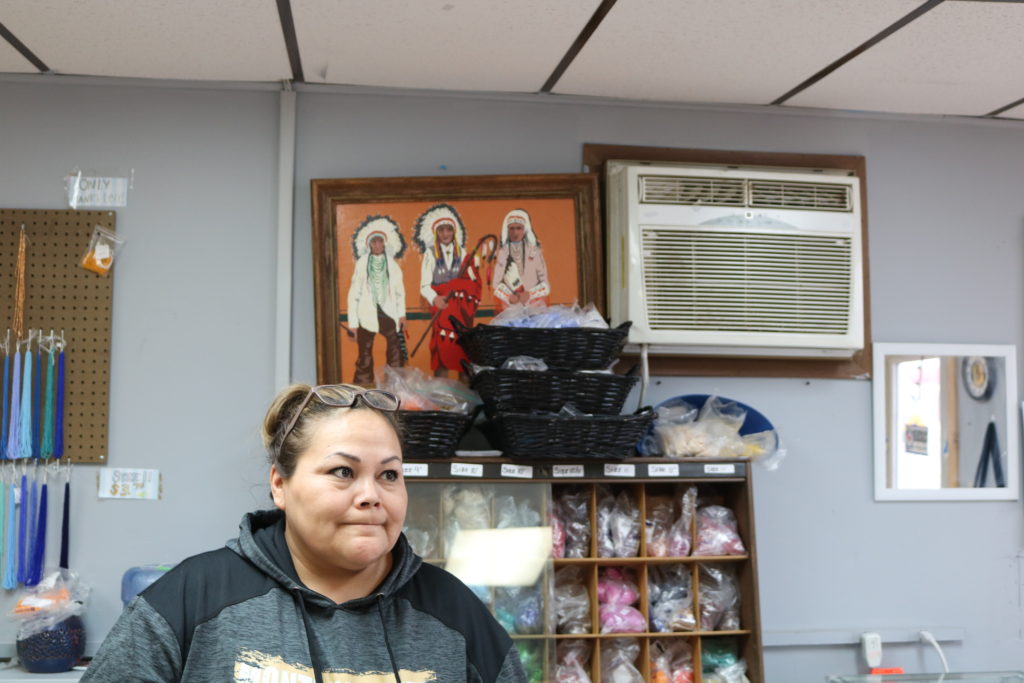
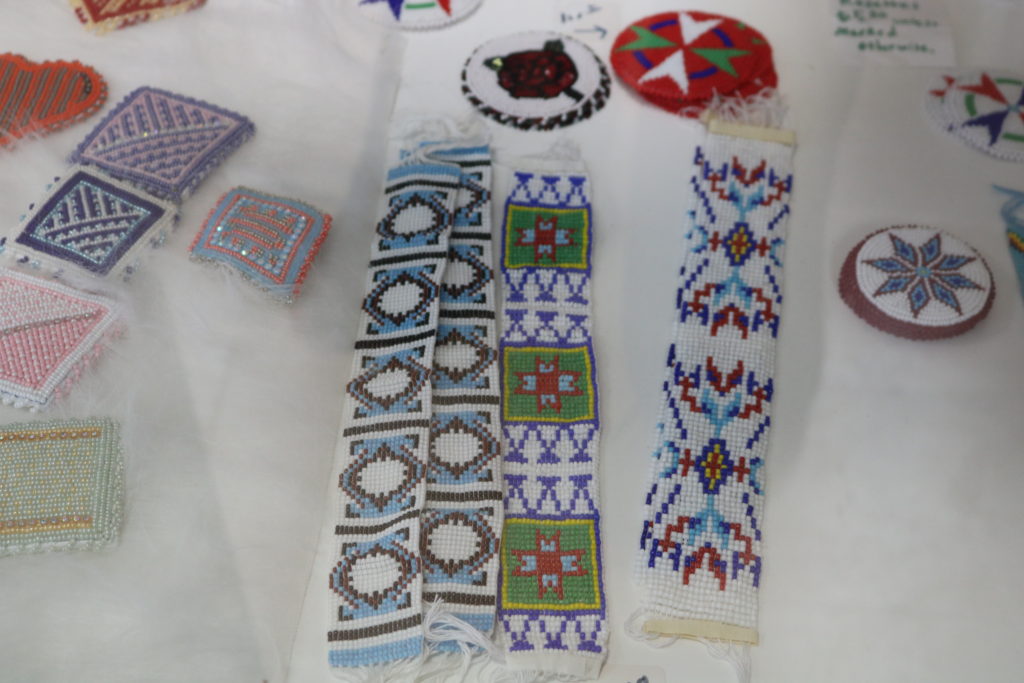
Mandan explained that the historical practice of the Three Affiliated Tribes was first quilt work, but then expanded to bead work from trading with different tribes for their land crops.
She says for her family preserves the traditions when it comes to bead work, “I taught my daughter how to bead. My son knows how to bead as well. I learned from my Mom and my grandma, and my mom learned from her grandma and her mom. So, it’s something you pass on.”
Although the New Town community has faced recent challenges, such as the media-cover death of Olivia Lone Bear.
The mother of five who went missing for nine months’ whose body was found in a pickup truck underneath the reservation lake. Lone Bear became one of the faces for the social justice movement of Missing and Murdered Indigenous Woman Movement(MMIW).
The MMIW social movement have recently gotten spark under the hashtag #MMIW, and #MMIR (Missing and Murdered Indigenous Relatives) to include men. The movement includes the awareness of violence including sexual against Native American and Alaskan Indigenous women.
The issues with Indigenous women population has been
A report from 2012 with the United States Department of Justice and the Consultation on Violence against Native Women stated that Native American women are murdered at a rate more than 10 times the national average.
It also reports one in three Native women will be raped in their lifetime compared to 1 and 5 of other women in the United States. 85 per cent of these rapes are committed by non-native individuals.
Urban Indian Health Institute “Our Bodies Our Stories” conducted asurveyed of 148 Native American Women from Seattle, WA.
The data stated that 94 per cent of Native American Women had been raped or coercion in their lifetime, and only 8 per cent of the rape victims first attacked had been convicted.
Alongside that the report stated that 86 per cent of the women reported they had suffered from historical trauma.
The reported defined historical trauma as “cumulative emotional and psychosocially over the lifespan and across generation, emanating from massive group trauma and a history of genocide.”
The New Town community has faced other issues such as the rise of oil refinements that has changed the culture of the environment of the reservation.
But Mandan still sees the beauty in the place she calls home.
“There’s a lot of good people here. There’s a lot of people here who are willing to share their culture with others all I have to do it ask and they’ll be willing to share with you,” said Mandan.
In Mandan’s opinion, the Native people are still here.
“They learned to adapt, they learn to survive. Our people had to adapt to where we were at first to where we ended up eventually.” She said.
She hopes in the future that beading continues down her family generation, and that one day her grandchildren will continue the family practice.